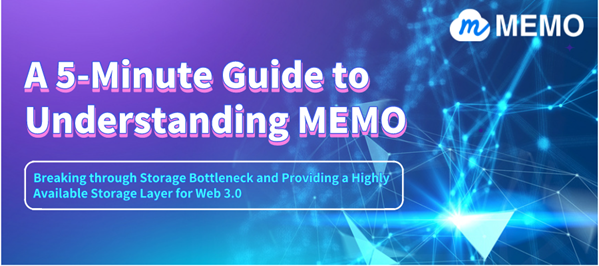Reason to trust

How Our News is Made
Strict editorial policy that focuses on accuracy, relevance, and impartiality
Ad discliamer
Morbi pretium leo et nisl aliquam mollis. Quisque arcu lorem, ultricies quis pellentesque nec, ullamcorper eu odio.
Blockchain-based decentralized storage has become a familiar sight to the public from around the world started to meet storage challenges – decentralized storage breaks standalone nodes and integrates massive isolated idle edge space into a huge amount of storage services.
In this segmented field, many projects have developed their own smart contracts, consensus mechanisms, verification mechanisms, and data redundancy mechanisms around decentralization.
As early as 2017, Filecoin, which pursues complete decentralization, and Storj, which is committed to studying efficient storage, have already begun their exploration.
The world changes with each passing day while the demands for security and efficiency remain unchanged. However, it is often difficult to achieve both goals simultaneously. Filecoin sacrifices availability in the pursuit of ultimate decentralization, and Storj pursues high efficiency while weakening decentralization.
MEMO seeks to tackle the issue of availability while maintaining a high degree of decentralization. It starts with improving space utilization, data verification speed, and data recovery performance, and strives to find the best balance between security and availability to provide Web 3.0 with a secure and highly available storage layer.
What is MEMO?
MEMO (Memoriae Decentralized Cloud Storage) is a new generation of large-scale decentralized storage system based on blockchain, which can organize global edge storage nodes to provide users with secure, efficient, and low-cost storage services.
MEMO is committed to providing a solid storage layer for Web 3.0, and has been continuously exploring ways to improve storage performance. On this premise, MEMO’s design follows the principle of high availability: under the premise of ensuring security, system design should be as simple as possible, the degree of redundancy should be as low as possible, and processing of various functions should be as efficient as possible.
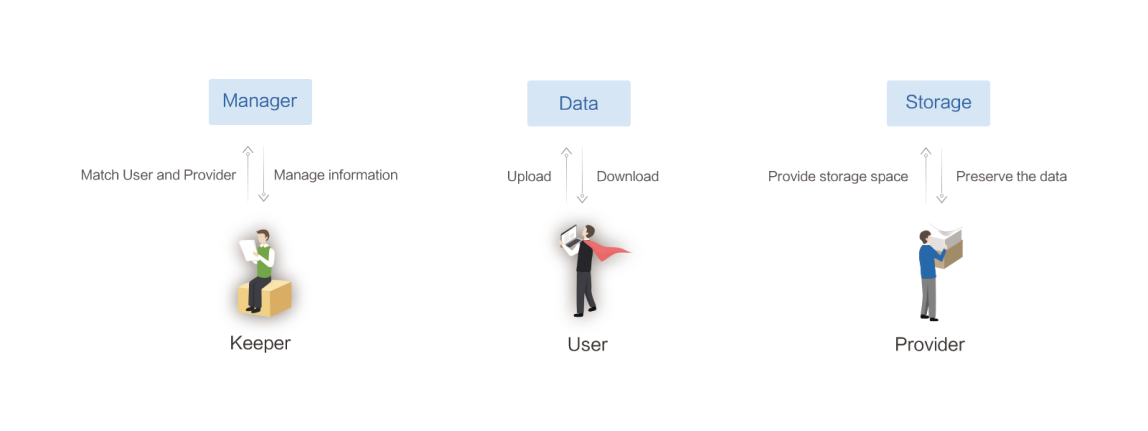
Figure: Roles in MEMO System
MEMO pursues maximum decentralization with smart contract through operation from user registration as a certain role to the end of service. There is no centralized management node in the system, so Keeper is chosen randomly and variedly. In a peer-to-peer (P2P) environment, smart contract can minimize malicious behavior by nodes of intermediaries.
Emerging Background of MEMO
MEMO was founded in September 2017 with the R&D team composed of world-class experts, engineers, and PhDs in the field of storage. With numerous exclusive patents in their research fields, these members are now distributed all over the world, and they have many years of development experience in Internet and blockchain industry.
Deepening of the Internet has accelerated the accumulation of global online data, and storage of information data has become a rigid demand, making inheritance and permanent storage of valuable data a problem that demands prompt solution. Under such background, it is the mission and vision of MEMO to store human information data permanently.
Driven by its mission, MEMO starts to solve the problems of two dimensions: massive data and time duration. Therefore, MEMO, a large-scale decentralized storage system based on blockchain, solves the problem of space by using edge storage devices to allow storage to expand theoretically, and solves the problem of time by data hierarchy mechanism, data verification mechanism, and data fault-tolerance and recovery mechanism, ensuring security, efficiency, and continuity of stored data.
Core Advantages of MEMO
Smart contract and encryption technology are the basis for ensuring a secure MEMO system, and entire-process, all-round, and all-element technological innovations in design structure, verification mechanism, operation, and maintenance and recovery, etc. of data storage conducts security upgrade of the entire storage system, providing a “technical foundation” for secure, efficient, and reliable operation.
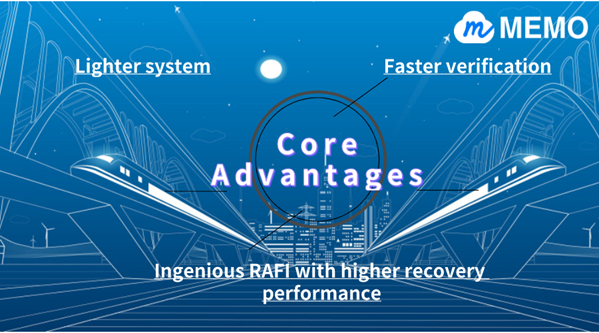
1. Lighter system
MEMO has innovated data hierarchy mechanism: it only records the most critical information (such as role information and smart contract) on blockchain, and uses management devices and edge storage devices to store other information and user data so as to prevent tremendous extra on-chain transactions and storage pressure caused by substantial amounts of information, shorten the time for data upload and download, save on-chain response space, improve the cost-effectiveness of the entire storage system, and achieve nearly the maximum ZB level of the stored data.
2. Faster verification
MEMO has innovated data verification mechanism: it designs a public verification method that can effectively reduce the communication overhead of data verification and the calculation cost of verification certification so that excluding the data reading time, generation certification can be completed within seconds and verification certification can be completed in one second, greatly reducing the computational burden of nodes and achieving second-level time for storage and download. In addition, the communication overhead of certification can be reduced to a constant level through certification compression.
3. Ingenious RAFI with higher recovery performance
MEMO has innovated data redundancy mechanism and recovery mechanism: it adopts two fault-tolerance methods, multi-copy and erasure coding, for fault tolerance, reducing burden and redundancy of the system. For recovery mechanism, MEMO starts with three aspects including recovery parallelism, recovery transmission volume, and selection of recovery time, and has innovated erasure coding. Its ingenious RAFI technique can quickly discover those data with higher risk of loss, thus greatly shortening data recovery time and further improving system security and reliability.
Features of MEMO
At present, there are many distributed storage projects based on blockchain with no more than two types of storage structure design: one type is distributed storage projects for the purpose of block generation, as the amount of stored data and the computing power of block generation are directly linked, causing too long time for upload and download; the other type, with the purpose of storage, separates block generation and storage, and uses Keepers to verify storage providers to store data while its design of “centralized node” for Keepers still lays hidden danger for security. With restricting Keepers through smart contract as well as the design of randomness and punishment mechanism, MEMO not only guarantees efficiency but also improves security. As a result, MEMO presents the following features:
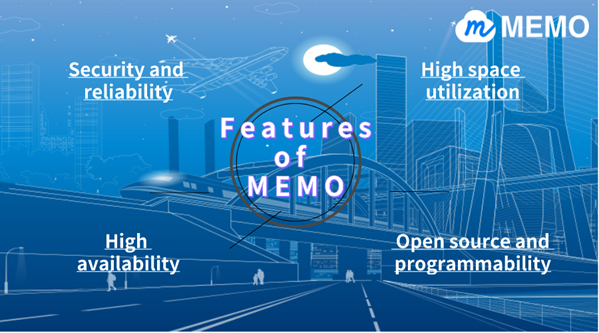
1. Security and reliability
Innovated data verification method and recovery mechanism, and ingenious RAFI technique greatly improves data recovery performance and guarantees security and reliability of data.
2. High space utilization
Hierarchical management of data and combination of multiple data redundancy mechanisms greatly improve utility rate of storage space.
3. High availability
Second-level communication, verification method of storage overhead, and off-chain searching and payment allow quick response to data reading and recovery, achieving high availability of data.
4. Open source and programmability
With open interface for available cross-chain support, developers can develop a variety of applications here, providing a solid storage layer for applications.
Generally speaking, MEMO has made many innovations in decentralized storage system. It hierarchically designs all kinds of data in accordance with their characteristics, and combines multi-copy and erasure coding. In addition, the innovative verification mechanism and ingenious RAFI have greatly improved the verification efficiency and repair performance of the system, allowing it to ensure security and reliability while greatly improving its storage space utility and availability.
Application Scenarios
In the era of Web 3.0, applications based on blockchain storage have in-depth development. MEMO testnet will be in service soon. MEMO provides secure, reliable, and efficient storage services for NFT and others based on both performance and cost-effectiveness; meanwhile, its open source and programmability create conditions for development of Dapps; in addition, it can also provide a storage layer for blockchain, serving the entire blockchain field.
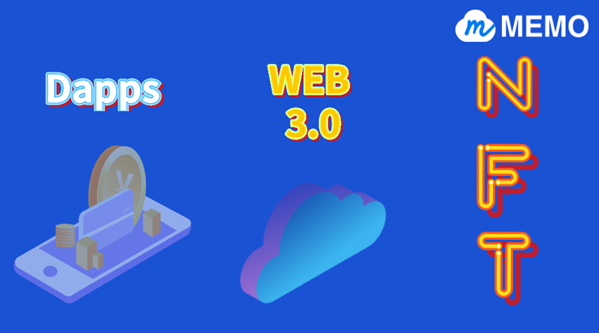
1. Metaverse&NFT
Provide individuals and institutions with data storage services of artwork copyright and digital works, separate copyright and digital works to avoid data loss due to centralized nodes, and ensure data privacy and security at the same time
2. Web3.0
In Web 3.0 ecosystem, MEMO-based storage layer can provide scalable space for data storage and link various protocols in the ecosystem to achieve compatibility and scalability
3. dApps
Open storage interface developed for dApps and abundant programmable support systems improve data access performance, reduce risk of data loss, and help dApps with stable and secure storage
MEMO has broken through the bottleneck of storage performance by implementing three improvements while ensuring decentralization, providing a solid storage layer for the Web 3.0 era.
